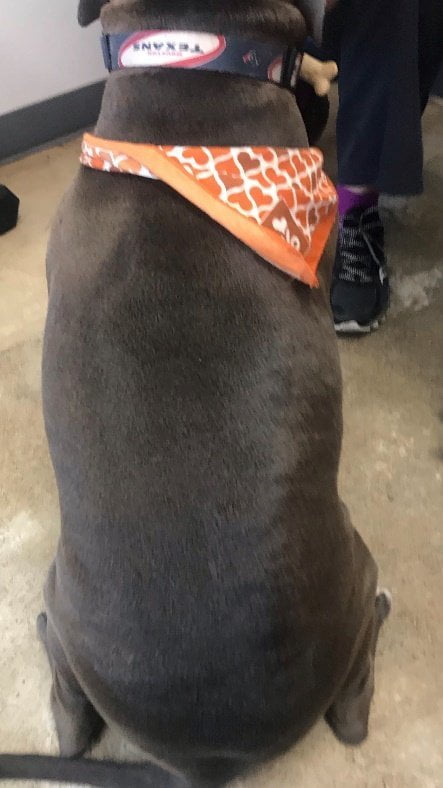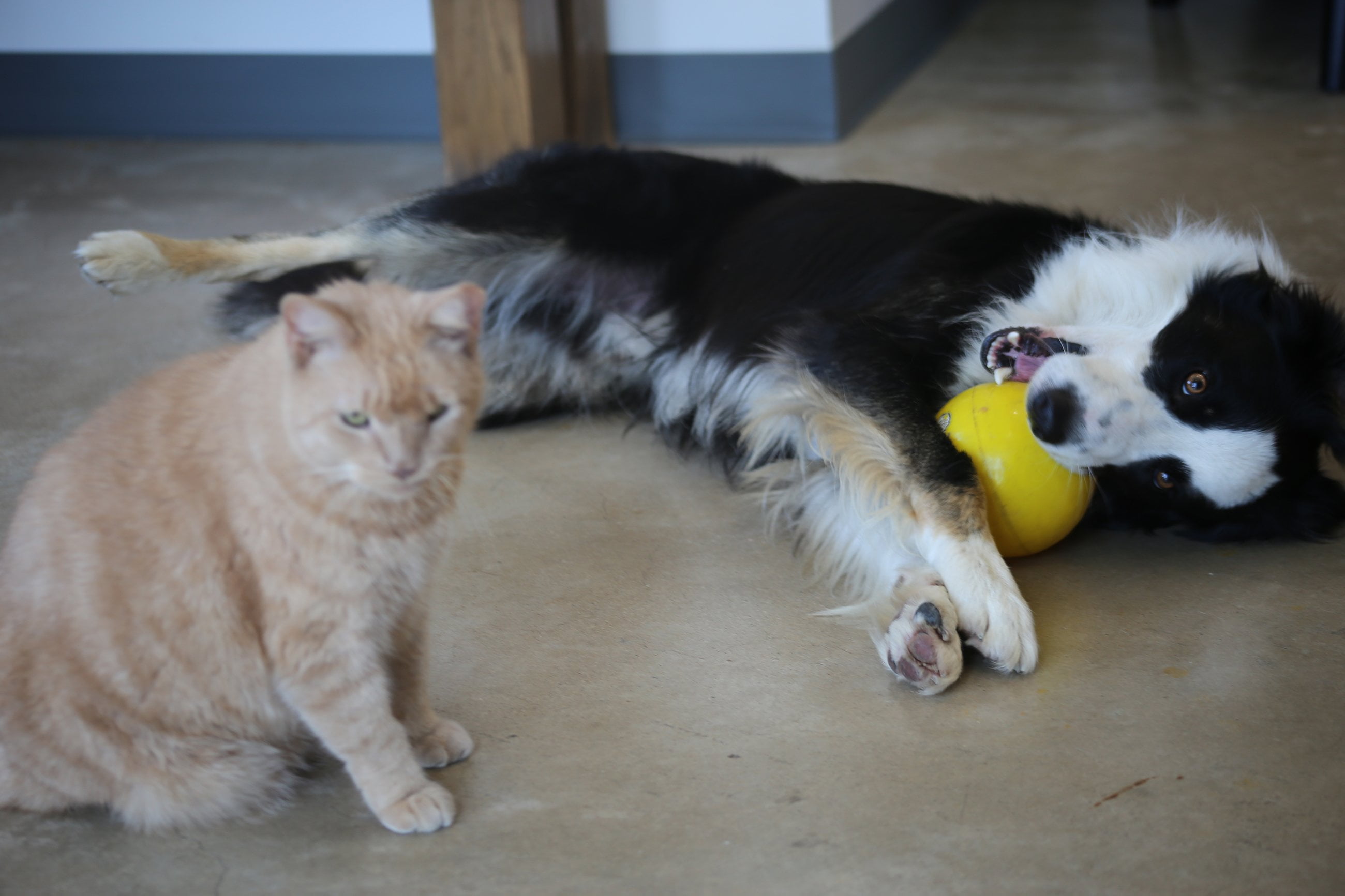Doctor
“How much do you feed your furry friend?”
Client
“About a cup twice a day.”
Doctor (looking at the pet)
“What size cup are you using?”

All too often this conversation is had in the exam room. And you may ask, ‘why we are talking about this?’
Obesity continues to be a significant problem in our veterinary patients seen on a daily basis. Obesity leads to early onset of certain diseases such as diabetes, cardiac or respiratory disease, kidney impairment or certain cancers to list a few, as well as, worsening of clinical signs secondary to osteoarthritis.
Weight control or weight reduction is an easy equation.
Calories + Exercise = body condition.
The exciting thing is… obesity is such an easy (and not so easy) problem to address in our patients. How can I say this, well the easy part is we know that by feeding fewer calories we should lose weight? The ‘not so easy’ part is so many parents feel like they have to love their four-legged friend through their stomachs with treat after treat or feeding ‘about a cup’.
Bottom line, a cup is not a cup! As veterinarians, when talking about a cup, we are meaning an 8-ounce measuring cup. Not a 32-ounce cup from the local gas station or even a regular drinking cup which typically runs around 12 ounces.
Let’s do the math! Let’s say your dog weighs 62 pounds but really should weigh 45 pounds. Opps! Two options: take the existing portion you are feeding and cut back by 25% and see how we do over the month or we can figure exactly what is needed. As we start talking through this example, we find out that you are feeding a 32-ounce cup from the local gas station twice a day. If the food you are feeding is 375 kcal/cup you are feeding 1,500kcal per meal times two meals or 3,000kcal per day.

Wait, don’t forget the handful of treats and the occasional table scraps. There are many equations out there for determining caloric intake needs, but your average 45-pound dog should receive between 800-1200kcal/day. This number can vary based on breed, sex, age, activity level, and so on. Again, if we do the math, currently receiving 3000kcal per day and should be getting around 1200kcal/day, you can see were the excess goes- to your pet’s waist line!

(Which bowl has the most food? Just because the bowl is big doesn’t mean you have to ‘fill’ the bowl!)
Hint: when calculating how many calories your pet should be eating a day, it is not based on your pets existing weight, rather it should be based on ‘what your pet’s ideal weight should be.’ Feed the lean dog/ cat inside the fat dog/cat suit.
And to follow up on the body condition equation above, we can control the calories but we also need to institute a regular exercise program to help boost the metabolic rate to burn calories and get everyone outside enjoying our beautiful city.
As always, if you have any questions please contact your Liberty Hill Veterinary Wellness veterinarian to discuss your individual pet’s needs.

